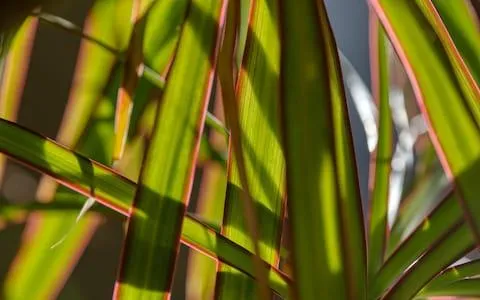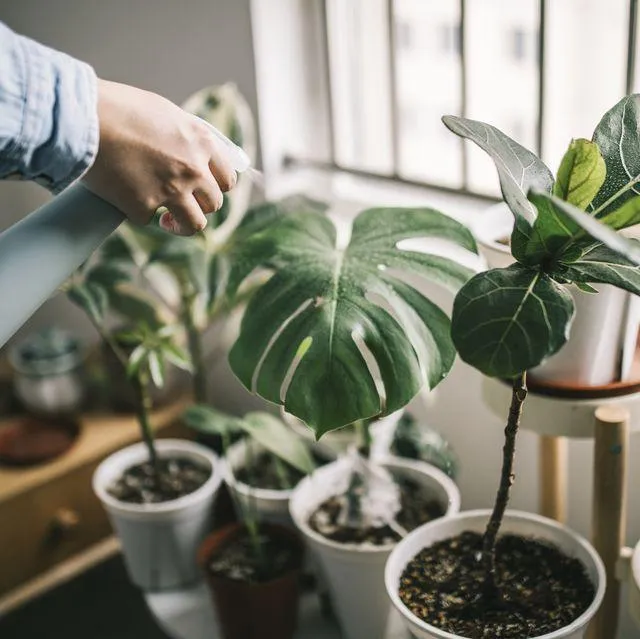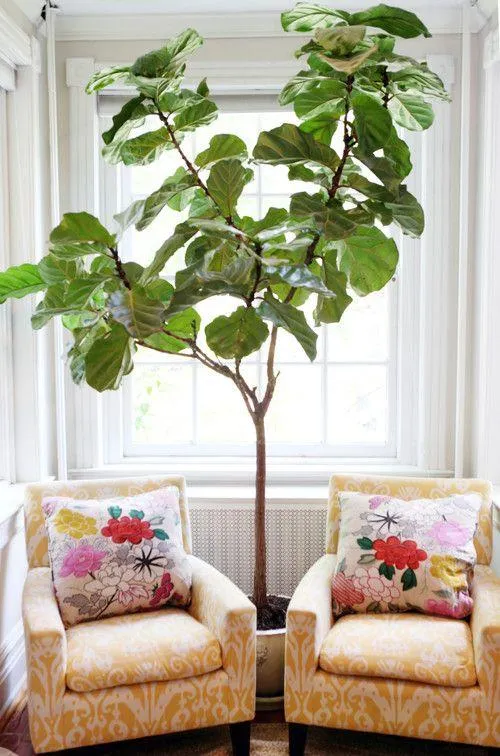The Best Trees to Keep Indoors and Why You Should Consider Growing Them
If you love having greenery around the house but don’t have outdoor space for a garden, don’t worry – there are many beautiful tree varieties that thrive when kept indoors. In this article, I’ll discuss some of the top options for indoor trees and share tips for caring for them successfully.
Chinese Evergreens
Chinese evergreens, or Aglaonema commutatum, are nearly impossible to kill and ideal for beginners. They add lush foliage without much fuss on your part. From my experience keeping Chinese evergreens, they tolerate low to medium light and do well in almost any indoor environment. They require very infrequent watering, about once every two weeks. Just be sure the soil dries slightly between waterings. Chinese evergreens come in an array of leaf colors and patterns that can brighten up any room.
Dwarf Umbrella Tree
The dwarf umbrella tree, or Schefflera arboricola, is another popular and easy-to-care-for houseplant. Its lacy green leaves resemble an opened umbrella, giving this tree its unique name. Dwarf umbrella trees do best in medium to bright indirect light. Placement near an east- or west-facing window works well. Water when the top inch of soil is dry. These trees are very forgiving and will tolerate dry periods between watering. They can grow up to 3-4 feet tall indoors and add vertical interest to desks or bookshelves.
Dwarf Date Palm
If you want a true potted palm tree indoors, consider a dwarf date palm (Phoenix roebelenii). Growing no taller than 6 feet, these palms thrive in medium to bright light. Being a palm, they need more consistent moisture than other houseplants. Water whenever the topsoil becomes slightly dry. Dwarf date palms bring a tropical flair to any living space. Mine has survived for over 5 years with inconsistent watering on my part – they’re remarkably hardy!
Dwarf Ficus
Ficus species like the Benjamin fig or rubber tree plant are popular indoor trees known for their easy care. Dwarf ficus varieties stay under 6 feet and adjust well to low to medium indoor light conditions. When watering, allow the top 1-2 inches of soil to dry out before watering again. Ficus trees have attractive waxy green or variegated leaves. Rubber plants are more forgiving of drying periods between waterings than Benjamin figs in my experience. Ficus trees add architectural shape and appeal to any room in your home.

Benefits of Keeping Indoor Trees
Aside from the obvious aesthetic benefits of greenery indoors, there are several other perks to keeping potted miniature trees:
- They improve indoor air quality by absorbing toxins from the air like formaldehyde from cleaning products or paint.
- Studies show having plants indoors can help reduce stress and boost well-being.
- Small trees take up very little floor space and can enhance virtually any interior setting.
- Tending to indoor plants can be a meditative, mindful activity that lowers anxiety.
- Trees add living elements to work-from-home spaces or areas lacking outdoor views.
In other words, even a few potted trees can go a long way to freshen up air, uplift your mood, and beautify your indoor surroundings. It’s easy to reap rewards from their presence.
Caring for Indoor Trees
While the trees mentioned above are very low maintenance, there are some basic care practices to follow for healthy plants:
Light
Assess your home’s light conditions and choose trees suited to the levels of illumination available, from low to bright indirect sunshine. Rotate plants weekly so all sides receive even exposure. A grow light may be needed for very shaded areas.
Water
Water when the top inch of soil is dry. For palms and ficus, maintain consistently moist soil. Use room temperature water and ensure pots drain well to prevent root rot. Going forward, stick to a regular watering schedule tailored to each tree.

Fertilizer
Feed indoor trees monthly in the growing season with a diluted liquid houseplant food. Follow package instructions for correct ratio of fertilizer to water. Too much can burn delicate roots.
Repotting
Transplant trees to larger pots with fresh soil only when root systems become pot-bound, generally every 1-2 years for most species. Use a pot just 1-2 inches wider to allow steady growth.
Pest and Disease Prevention
Check leaves regularly for signs of pests like aphids or mites. Wipe down occasionally with insecticidal soap or neem oil. Fungus and root rot are rare with good drainage and airflow. However, watching for yellow lower leaves is important! Addressing problems early aids recovery.
With a bit of care learning the preferences and needs of different trees, anyone can successfully nurture miniature potted trees indoors for many years to come. Not only will you benefit from their beauty, cleaning abilities and stress-reducing effects, your trees will thank you for giving them a caring home!
I hope this guide on choosing and caring for indoor trees answered any questions you had and gave you inspiration to bring the outdoors in. Let me know if you need any other information for growing trees inside your home sweet home. Happy planting!

Indoor Tree Varieties
| Tree | Size | Growth Rate | Light Needs | Care Tips |
|---|---|---|---|---|
| Spider plant | Small | Slow | Low | Easy to care for, tolerate low light. Water when soil is dry. |
| Peace lily | Medium | Moderate | Medium | Loves humidity, grow in wet soil. Toxic to pets. |
| Chinese evergreen | Small | Slow | Low | Tolerates low light, water only when dry. Non-toxic. |
| Snake plant | Medium | Slow | Low | Very hardy, tolerant of neglect. Good air purifier. |
| Rubber tree | Large | Moderate | Medium | Needs humidity, can grow quite large indoors. |
| Pothos | Small | Moderate | Low | Vining plant, easy to care for. Toxic to pets. |
FAQ
-
What types of trees can I keep indoors?
There are quite a few tree varieties that do well inside homes and offices. Basically, look for trees that don’t need a huge amount of sunlight or space to grow. Something like a dwarf date palm or a fig tree would be a good option.
-
How do I care for an indoor tree?
Indoor trees require regular watering to stay healthy. Water when the soil becomes dry to the touch, usually every 5-7 days. Also,trees do better with natural light, so put them near a sunny window. You may need to mist the leaves occasionally. On the other hand, overwatering is the main cause of death for indoor trees.
-
What size pot do I need?
The pot should be only slightly larger than the root ball. A tree potted in a pot that is too big may not get the water it requires. As a rule, the pot should allow 1-2 inches of space around the root ball. So check the size of the root ball and choose a matching container.
-
How do I know if a tree is getting enough light?
Lack of sufficient light is another major issue for indoor trees. Trees getting too little light may drop leaves, fail to grow, or develop long spindly stems. So place the tree in the brightest spot you have, like near an east or west facing window. You can also check the leaves – if they’re yellowing it needs more sun.

-
Will bugs or pets be a problem?
Most indoor trees should not attract many pests. However, occasionally insects may appear. Keep an eye out for signs of infestation and remove any sickly leaves or stems. Also make sure pets don’t chew the trees, especially if they’re poisonous kinds like dieffenbachia. Pets may also knock plants over by bumping into them.
-
What are some low-maintenance tree options?
For people who don’t want to fuss too much, trees like bamboo palm, Chinese evergreen or spider plant work well. They tend to be fairly forgiving of minor mistakes. Some folks also have success with hardy plants basically like pothos or devil’s ivy. Just water them weekly and they’ll be pretty content taking care of themselves.
-
How long will an indoor tree live?
Tree life spans can vary significantly depending on growing conditions and tree type. Many dwarf indoor trees may survive 5-10 years, but others can live much longer – perhaps 15-20 years with good care. Proper watering, light and pruning are crucial for long-term tree health. So with a little effort, you could have an indoor tree companion for quite a while.
